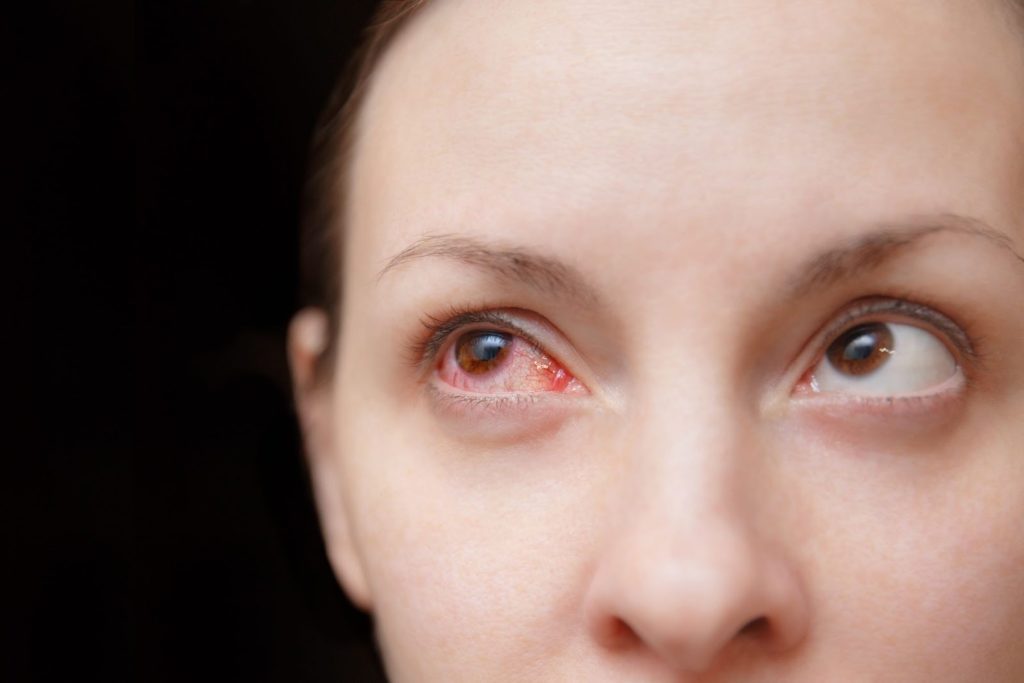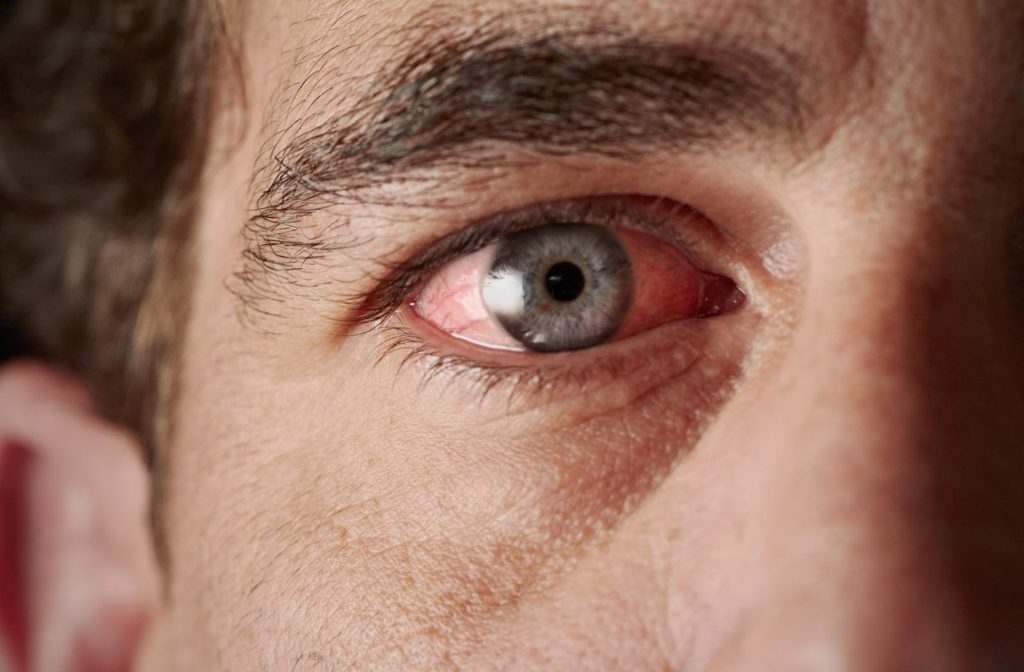Pink eye has a habit of spreading rapidly, causing inflamed and irritated eyes. Many see pink eye as a minor inconvenience at best, but do you need to see an eye doctor for it? Continue reading to learn more about pink eye, including the different forms of this condition and if you need to see an optometrist.
What is Pink Eye?
Pink eye is the swelling of the lining of your eyelid and eye surface, causing them to become red and inflamed. Also known as conjunctivitis, this condition is common due to how easily it can spread, especially for schools, playgrounds, and daycares.
There are different forms of pink eye, so the cause may be different for each person. Viruses are a common cause of pink eye, and this condition can develop alongside a cold. Bacterial infections can cause conjunctivitis.
Pink Eye Symptoms
Pink eye usually spreads through eye to hand to eye contact. This infection can spread from sharing a face towel, makeup, or bed sheet. You can get pink eye because of poor hygiene, such as not washing your hands or not changing pillowcases. Common pink eye symptoms include:
- Redness
- Watery eyes
- Itching or burning eyes
- Light sensitivity
- Grey or yellow eye drainage
- A gritty feeling in your eye
Conjunctivitis can affect one or both of your eyes, and symptoms may spread from one eye to the other. Many say this condition isn’t serious, but do you ever need to see your optometrist for pink eye?
Do You Need to See an Eye Doctor for Pink Eye?
While conjunctivitis is typically mild, some forms can potentially harm your eyes. Sometimes pink eye symptoms can be a sign of another problem. For your eye health, visit your optometrist if:
- You have eye pain when looking into a bright light
- Your vision is significantly affected
- You have significant discharge from your eye
- If eye redness does not improve in 2 weeks
If you have a newborn with pink eye, have them seen as soon as possible to avoid damage to their vision. Conjunctivitis can resolve with time, and some forms of this condition may only require supportive treatment.

Common Forms of Pink Eye
There are many forms of pink eye, but viral, bacterial, and allergic strains are common. Each can affect your eyes differently and require different forms of treatment.
Viral
Viral pink eye typically develops from viruses like the common cold. It’s highly contagious and can spread by following an upper respiratory infection through the mucous membrane. Viral strains of conjunctivitis typically begin in one eye before transferring to the other in a few days.
Viral pink eye may present alongside other cold symptoms such as a sore throat. This form of conjunctivitis spreads through direct and indirect contact with the liquid draining from an infected eye.
Treatment is typically supportive for viral pink eye. Cool compresses for temporary relief and preventive measures to avoid spreading the infection can help. These measures include:
- Avoiding sharing towels & pillows
- Avoiding swimming
- Avoiding contact with the infected eye
Bacterial
Bacterial pink eye comes from direct contact with bacteria from unclean hands and contaminated facial makeup and lotion. This pink eye strain is just as contagious as viral conjunctivitis.
Bacterial strains of pink eye usually infect a single eye, but symptoms can present in both. Pus and mucus discharge is common due to the bacteria present in the eye. The preventative measures suggested for viral conjunctivitis are necessary for bacterial pink eye.
Treatment for this form of pink eye requires antibiotics to fight the bacterial infection present.
Allergic
Allergic pink eye is different from the other forms of conjunctivitis; it isn’t contagious. This inflammation usually affects both eyes and may be accompanied by sneezing, blurry vision, and swelling.
Because allergies cause this strain of pink eye, treatment may be as simple as removing the allergy trigger. Antihistamines may help if symptoms persist.
Prevention can be the most effective way to protect your eyes from conjunctivitis, especially with allergic pink eye. Washing your face and maintaining good hygiene can reduce your risk of contracting conjunctivitis.
Preventing Pink Eye
Preventing pink eye depends on the different forms you may be at risk of contracting. The best prevention for allergic conjunctivitis is to avoid any allergy triggers as best as possible. For viral and bacterial pink eye, you can follow some simple tips to reduce your risk, such as:
- Washing your hands thoroughly & frequently with soap & warm water
- Keeping hand sanitizer with you when out in public
- Avoiding sharing eye makeup, face towels, pillows, etc
- Wiping down frequently-used objects & surfaces
- Keeping your child away from school if they have pink eye
- Avoiding touching or rubbing your eyes
By adding these tips to your daily routine, you can protect your eyes and reduce your risk of contracting conjunctivitis. If you develop pink eye despite following these tips, keep an eye on your health and visit your optometrist if you’re concerned.
Keep Your Eyes Healthy
No matter the form of pink eye you may have, you deserve relief. It may only take time for the infection to subside, but monitor how your eyes are reacting. If you’re in pain or redness is persisting, book an appointment with your optometrist.



